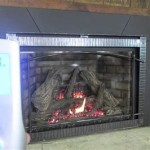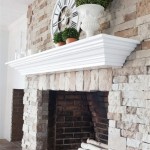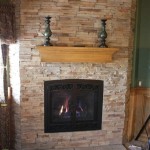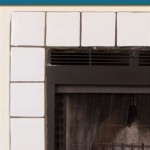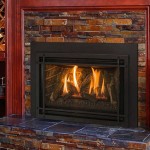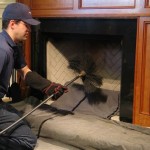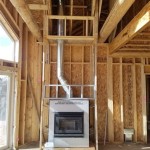Heatilator Gas Fireplace: Addressing the Small Flame Issue
Heatilator gas fireplaces are a popular choice for homeowners seeking the ambiance and warmth of a traditional fireplace without the mess and hassle of wood. They offer convenience, efficiency, and a variety of aesthetic styles. However, a common concern that arises with Heatilator gas fireplaces, and gas fireplaces in general, is the presence of a small or weak flame. This article delves into the potential causes of a small flame in a Heatilator gas fireplace, providing a comprehensive overview of troubleshooting steps and preventative measures.
Understanding the factors that influence flame size is crucial for effective troubleshooting. A healthy, robust flame in a Heatilator gas fireplace indicates efficient combustion and optimal heat output. Conversely, a small, weak, or flickering flame signifies an underlying issue that requires attention. Ignoring this issue can lead to reduced heating efficiency, increased energy consumption, and potentially, safety hazards.
Understanding the Gas Supply
The gas supply is the most fundamental aspect of a gas fireplace's operation. A consistent and adequate supply of natural gas or propane is essential for a strong, healthy flame. Several factors can compromise the gas supply, leading to a diminished flame size. One common culprit is a partially closed or faulty gas shut-off valve. These valves are typically located near the fireplace and on the main gas line entering the house. If a valve is not fully open, it restricts the flow of gas, resulting in a reduced flame. Similarly, a kinked or damaged gas line can impede gas flow, particularly in installations using flexible gas lines.
Another potential problem related to the gas supply is low gas pressure. This can be caused by several factors, including high gas demand from other appliances in the home. If multiple gas appliances are operating simultaneously, especially during peak usage hours, the pressure available to the fireplace may be insufficient. A gas pressure regulator, typically located near the gas meter, is designed to maintain a consistent pressure, but these regulators can malfunction or fail over time. Finally, for propane-fueled fireplaces, the propane tank level is a critical consideration. A low propane tank will invariably result in a weak flame, and in extreme cases, the fireplace may not ignite at all.
To diagnose potential gas supply issues, begin by visually inspecting the gas shut-off valves to ensure they are fully open. Next, check the gas line for any kinks or damage. If propane is used, verify the tank level. If problems persist, it is advisable to contact a qualified gas technician who can measure the gas pressure at the fireplace and assess the functionality of the gas pressure regulator. Attempting to adjust or repair the gas pressure regulator without proper training and tools can be dangerous and should only be performed by a professional.
Pilot Light and Thermocouple Issues
The pilot light is a small, constantly burning flame that ignites the main burner in a gas fireplace. Its proper functioning is paramount for reliable fireplace operation. A weak or extinguished pilot light can prevent the main burner from igniting or cause it to produce an inconsistent or small flame. One common cause of a weak pilot light is a dirty or partially blocked pilot orifice. This small opening supplies gas to the pilot flame, and if it becomes clogged with dust, debris, or carbon deposits, the pilot flame will be reduced in size. Similarly, the pilot tube, which carries gas from the gas valve to the pilot burner, can become obstructed, leading to a diminished pilot flame.
The thermocouple, a safety device, is closely associated with the pilot light. It is a small metal rod that generates a small electrical current when heated by the pilot flame. This current holds the gas valve open, allowing gas to flow to the main burner. If the thermocouple is not properly positioned in the pilot flame or if it is faulty, it will not generate sufficient current, causing the gas valve to close and extinguish the pilot light, or prevent the main burner from operating correctly. A bent or damaged thermocouple may not receive adequate heat from the pilot flame. Furthermore, the connections between the thermocouple and the gas valve can become loose or corroded, disrupting the electrical circuit.
Troubleshooting pilot light and thermocouple issues involves several steps. First, visually inspect the pilot orifice and pilot tube for any signs of blockage. A small wire or pin can be used to carefully clear any debris from the orifice. Exercise caution to avoid enlarging the orifice, as this can affect the pilot flame characteristics. Next, ensure the thermocouple is properly positioned in the pilot flame, with the tip of the thermocouple fully enveloped by the flame. Check the connections between the thermocouple and the gas valve for tightness and signs of corrosion. If the pilot light remains weak or frequently extinguishes, it is likely that the thermocouple is faulty and needs replacement. A qualified technician can test the thermocouple's output voltage using a multimeter to determine its condition.
Air-Gas Mixture and Burner Problems
The proper combustion of gas in a fireplace requires a precise mixture of air and gas. An imbalance in this mixture can lead to incomplete combustion, resulting in a small, smoky, or unstable flame. Inadequate air supply is a common cause of an imbalanced air-gas mixture. Most gas fireplaces have air shutters or vents near the burner that allow air to mix with the gas. These shutters can be inadvertently closed or obstructed by dust, debris, or spiderwebs, restricting airflow and causing the flame to be oxygen-starved.
Conversely, excessive airflow can also disrupt the air-gas mixture, leading to a weak or unstable flame. This can occur if the air shutters are excessively open or if there are drafts in the vicinity of the fireplace. The design of the burner itself plays a critical role in the air-gas mixture. Gas fireplace burners come in various designs, and each design requires a specific air-gas ratio for optimal combustion. A damaged or corroded burner can disrupt the flow of gas and air, leading to an uneven or small flame. Burner ports, the small openings through which gas is released, can become clogged with soot, carbon deposits, or dust, hindering the flow of gas and affecting the flame's size and shape.
Diagnosing air-gas mixture and burner issues involves a thorough inspection of the fireplace. Start by visually inspecting the air shutters or vents to ensure they are properly adjusted and free from obstructions. Adjust the shutters gradually to find the optimal setting that produces a clean, blue flame without excessive soot or smoke. Next, carefully examine the burner for any signs of damage, corrosion, or clogged ports. Use a soft brush or vacuum cleaner to remove any debris from the burner and burner ports. In some cases, the burner may need to be removed and cleaned more thoroughly. If the burner is severely damaged or corroded, it may need to be replaced. A carbon monoxide detector should always be present in the home to provide an extra measure of safety. Consulting a qualified technician is recommended for complex burner issues or if the air-gas mixture cannot be properly adjusted.
Furthermore, the glass door on a Heatilator gas fireplace impacts the air-gas mixture. It is designed to provide a tight seal, preventing drafts and maintaining optimal combustion conditions. A loose or improperly installed glass door can disrupt the airflow, leading to a weak or unstable flame. Always ensure that the glass door is properly sealed and that the gasket around the door is in good condition.
Regular maintenance, including cleaning the burner, inspecting the air shutters, and checking the pilot light, is crucial for maintaining a healthy flame in a Heatilator gas fireplace. Addressing a small flame promptly not only improves heating efficiency but also ensures the safe and reliable operation of the appliance.

Heatilator Heirloom 42 Traditional Direct Vent Natural Gas Fireplace Us

Heatilator Gas Fireplace Operation

Heatilator Caliber 36 Traditional Top Rear Direct Vent Natural Gas Fi Us Fireplace

Heatilator Birmingham 50

Heatilator Novus 36 Traditional Top Rear Direct Vent Propane Gas Fire Us Fireplace

Heatilator Novus Nxt 33 Traditional Top Rear Direct Vent Propane Gas Us Fireplace

Heatilator Fireplace Collection Capo Fireside

Discover The Built In Fireplaces Styles Fuels And Installation Guide Flame Authority

Heatilator Crave 48 Linear Contemporary Top Direct Vent Natural Gas F Us Fireplace

Heatilator Novus Nxt 36
Related Posts


